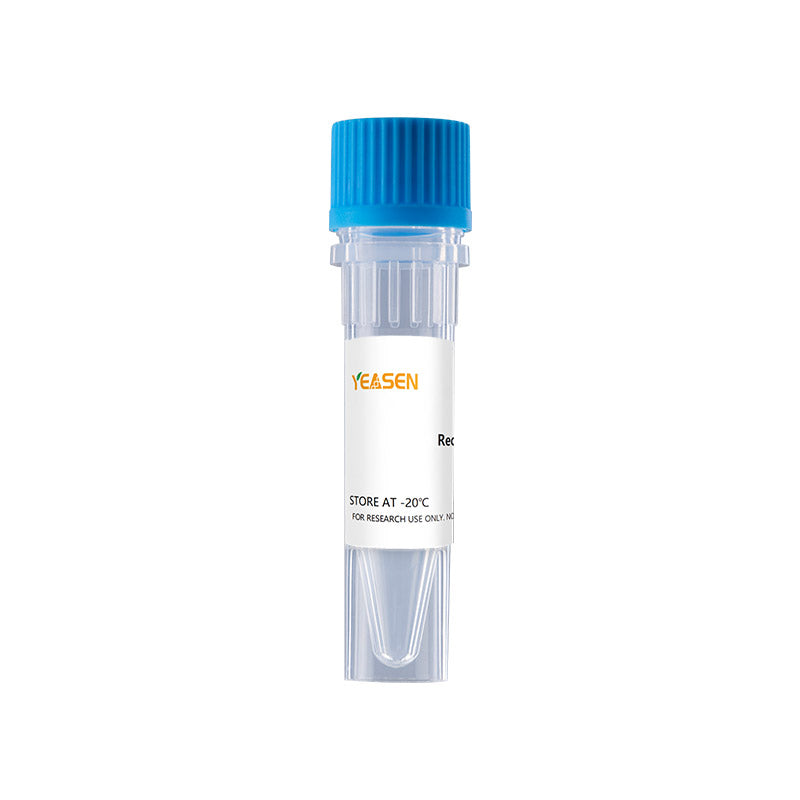Description
CX3CL1, also named neurotactin, is a member of the delta chemokine subfamily that contains a novel C-X3-C motif. Unlike other known chemokines, CX3CL1 is a type 1 membrane protein containing a chemokine domain tethered on a long mucin-like stalk. The extracellular domain of CX3CL1 can potentially be released as a soluble protein by proteolysis at the conserved dibasic motif proximal to the transmembrane region. With the exception of the stalk region, rat CX3CL1 shares a high degree of amino sequence homology (83% sequence identity) with human and mouse CX3CL1. CX3CL1 is expressed in various tissues including heart, brain, lung, kidney, skeletal muscle, and testis. In rat brain, CX3CL1 expression was found to be localized principally to neurons. The expression of CX3CL1 was also reported to be up‑regulated on activated endothelial cells. Membrane‑bound CX3CL1 has been shown to promote adhesion of leukocytes. The soluble chemokine domain of human CX3CL1 was reported to be chemotactic for T cells and monocytes while the soluble chemokine domain of mouse CX3CL1 was reported to chemoattract neutrophils and T‑lymphocytes but not monocytes. CX3CR1, previously named V28 or chemokine beta receptor‑like 1, has been found to be a specific receptor for CX3CL1. In addition, US28, a 7TM receptor encoded by human cytomegalovirus that binds multiple CC chemokines, has also been shown to bind fractalkine with high-affinity.
Product Properties
|
Synonyms |
CX3C Membrane-anchored Chemokine, Neurotactin, Small-inducible Cytokine D1 |
|
Accession |
O55145 |
|
GeneID |
89808 |
|
Source |
E.coli-derived Rat Fractalkine/CX3CL1, Gln25-Gly100. |
|
Molecular Weight |
Approximately 8.8 kDa. |
|
AA Sequence |
QHLGMTKCEI MCGKMTSRIP VALLIRYQLN QESCGKRAIV LETTQHRRFC ADPKEKWVQD AMKHLDHQAA ALTKNG |
|
Tag |
None |
|
Physical Appearance |
Sterile Filtered White lyophilized (freeze-dried) powder. |
|
Purity |
> 95% by SDS-PAGE and HPLC analyses. |
|
Biological Activity |
The biological activity determined by a chemotaxis bioassay using human monocytes is in a concentration of 5.0-10 ng/mL. Fully biologically active when compared to standard. |
|
Endotoxin |
< 1.0 EU per 1μg of the protein by the LAL method. |
|
Formulation |
Lyophilized from a 0.2 µm filtered concentrated solution in 2× PBS, pH 7.4. |
|
Reconstitution |
We recommend that this vial be briefly centrifuged prior to opening to bring the contents to the bottom. Reconstitute in sterile distilled water or aqueous buffer containing 0.1% BSA to a concentration of 0.1-1.0 mg/mL. Stock solutions should be apportioned into working aliquots and stored at ≤ -20°C. Further dilutions should be made in appropriate buffered solutions. |
Shipping and Storage
The products are shipped with ice pack and can be stored at -20℃ to -80℃ for 1 year.
Recommend to aliquot the protein into smaller quantities when first used and avoid repeated freeze-thaw cycles.
Cautions
1. Avoid repeated freeze-thaw cycles.
2. For your safety and health, please wear lab coats and disposable gloves for operation.
3. For research use only!
Payment & Security
Your payment information is processed securely. We do not store credit card details nor have access to your credit card information.
Inquiry
You may also like
FAQ
The product is for research purposes only and is not intended for therapeutic or diagnostic use in humans or animals. Products and content are protected by patents, trademarks, and copyrights owned by Yeasen Biotechnology. Trademark symbols indicate the country of origin, not necessarily registration in all regions.
Certain applications may require additional third-party intellectual property rights.
Yeasen is dedicated to ethical science, believing our research should address critical questions while ensuring safety and ethical standards.

